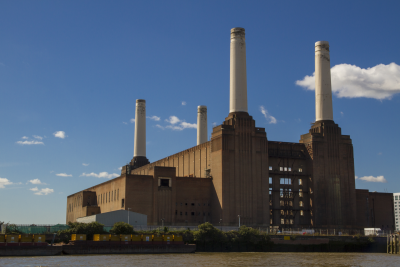 Historic England has published its annual Heritage at Risk Register for 2021. The Register is the yearly health-check of England’s most valued historic places and those most at risk of being lost forever as a result of neglect, decay or inappropriate development.
Historic England has published its annual Heritage at Risk Register for 2021. The Register is the yearly health-check of England’s most valued historic places and those most at risk of being lost forever as a result of neglect, decay or inappropriate development.
image: Alberto Pascual, CC BY-SA 3.0 <https://creativecommons.org/licenses/by-sa/3.0>, via Wikimedia Commons
…£9.8 million in grants to historic places…., plus another £5.6 million which was awarded to heritage at risk sites from the Culture Recovery Fund…
Historic England writes:
Over the last year, 130 historic buildings and sites have been added to the Register because of their deteriorating condition and some 233 sites have been saved and their futures secured.
Many have been rescued thanks to the hard work and dedication of local communities, who have come together to save places despite the challenges wrought by the COVID-19 pandemic over the past 18 months.
Charities, owners, local councils and Historic England have also worked together to see historic places restored, re-used and brought back to life. Examples include:
- iconic Battersea Power Station in London which has undergone an ambitious redevelopment programme and is due to reopen next year
- a Victorian public lavatory that has been converted into a cosy bar in Bloomsbury
- the world’s tallest three-sided obelisk to the Duke of Wellington in Somerset
- Plumpton Rocks in Yorkshire, considered to be one of the finest 18th-century landscapes in the North of England and painted twice by J M W Turner
- an extraordinary mock fort and dock built by the fifth Lord Byron around 1750 as an ‘eye-catcher’ to be seen across the lake from his home, Newstead Abbey in Nottinghamshire. It also served as a mooring and suitably evocative backdrop for the ship which he kept on the lake for entertaining friends with recreations of naval battles!
Historic England gave £9.8 million in grants to historic places throughout the past year, plus another £5.6 million which was awarded to heritage at risk sites from the Culture Recovery Fund during the pandemic in 2020/21 as part of the Heritage Stimulus Fund (Round One). A further £3.6 million has recently been awarded for (Round Two) 2021/22. These grants help with emergency repairs to historic buildings and help protect the livelihoods of the skilled craft workers who keep our cherished historic places alive.
With the United Nations Climate Change Conference COP26 currently underway in Glasgow, this is an even more important moment to underline how heritage can play a role in reducing carbon emissions. Reusing those historic buildings and places rescued from the Register this year can help to tackle climate change by avoiding the high carbon emissions associated with demolishing existing structures and building new. To meet the government’s target of being carbon neutral by 2050, we know we must recycle, reuse and responsibly adapt our existing historic buildings.
“Our heritage is an anchor for us all in testing times. Despite the challenges we have all faced recently, this year’s Heritage at Risk Register demonstrates that looking after and investing in our historic places can bring communities together, contribute to the country’s economic recovery and help tackle climate change. Our historic places deserve attention, investment and a secure future.”
National headline statistics
The Heritage at Risk Register 2021 reveals that in England 233 sites have been saved and 130 sites have been added to the Register. The breakdown of the sites that are at risk of neglect, decay or inappropriate change in 2021 is:
- 1,459 buildings or structures
- 2,001 non-structural archaeological sites
- 923 places of worship
- 104 registered parks and gardens
- 491 conservation areas
- 3 battlefields and
- 4 protected wreck sites
There are 4985 assets on the Register in England, 112 fewer than in 2020. Across the country 130 sites have been added to the Register this year because of concerns about their condition.

